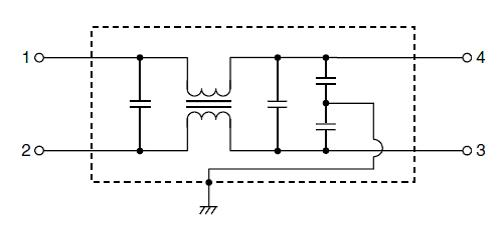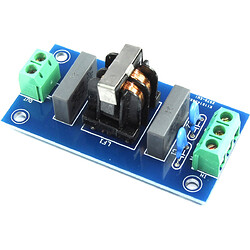In the digital transmission or a data is correctly transmitted or is not so you can get just interruptions in the audio reproduction or errors like nothing is reproduced in no cases you can get a different audio quality
Go back and watch the video. There are obviously differences in the information being transferred on various cables.
There is no error correction on USB audio, so it can lose packets, But…
That’s not the issue with USB connections, or cables for that matter.
For USB cables it’s about the noise on the 5V/GND and data lines.
DAC’s go to a great deal of effort to isolate the incoming USB signal, it’s why you’ll hear about Galvanic isolation and RF isolation, and DAC’s are a lot better at it than they used to be, but there are limitations as to what you can do inside the box.
I hate to mention this, and I won’t link to it, but there is an ASR review of a Wireworld USB cable that demonstrates a difference in noise from just the cable.
Nevertheless, the differences are quite small and hardly worth mentioning.
When we listen to music, 90% of it comes out well with a reasonable hardware and software setup, and that is more than sufficient, especially for what we perceive.
The situation is different when audible clusters and noise occur, where the cause is usually due to simple things.
For example, if you plug everything into a power strip that has been extended again.
Or a really bad PC that causes noises that may come from the power supply.
As a simple example, I had audible noises that were not necessarily annoying, but they were there.
And I solved the problem with a Matrix Audio elements h usb card.
The sound only improved minimally and was quickly forgotten in my head.
Ergo, if I take a simple usb card that was built somewhat sensibly for 50$/€ and connect it to the pci slot, I have done a lot in terms of noise reduction.
A 150$/€ cable will not be able to work miracles.
Up to a certain degree, that’s all okay, and beyond that, it’s a lot of mumbo jumbo.
Most of it starts with simple things.
Not too much and connect everything to one socket, use halfway decent cable, pay attention to polarities when connecting, give the devices enough distance when setting up and choose the cable lengths carefully already makes a lot of difference.
The socket should be free of defects, not painted with wall paint, oxidised contacts.
I certainly have problems if the PC is in the corner and the Dac is in the middle and 4-7 metres away.
If I set it up so that the Dac is close to the PC and the amplifier and rather extend the cable to the speakers, I have hardly done anything wrong.
Some protocols like S/PDIF only have a parity bit to detect errors (somewhat unreliably). Since there is no 2-way communication, there is no way for the recipient to request retransmission of corrupted data.
USB packets use a 16-bit CRC to detect errors. USB hosts or devices may request retransmission when an error is detected.
EDIT: As noted by Polygonhell a couple posts down, USB isochronous transfers (the type used for audio) do not use error detection or retransmission.
The USB-IF has standards for cable testing. However, there are plenty of manufacturers selling uncertified cables of varying quality.
USB 3.1 Legacy Connectors and Cable Assemblies Compliance Document Rev 1.1
There are too many variables in the experiment to determine the source of the residual error. The complete chain includes:
- USB audio source (PC)
- USB to I2S converter (microcontroller integrated in DAC)
- DAC
- Analog connection from DAC to ADC
- ADC (Focusrite Scarlett)
- USB audio sink (PC)
To find out where the inconsistency is coming from, it is necessary to test the system at various points in the chain. Some examples of possible sub-experiments include:
- Use a USB protocol analyzer to compare the digital data coming from the PC during multiple playbacks and check for errors/retransmissions.
- Play audio from the PC and use a logic analyzer to record the DAC’s internal I2S signals (assuming for this example a DAC IC that uses I2S). Ensure that the samples and timing accuracy are consistent for each playback.
- Determine whether consistency is improved when using a non-USB source (I2S, S/PDIF, etc.).
- Use a calibrated signal source to verify the Scarlett’s ADC consistency.
That depends though doesn’t it? For most people 98% good is more than ok. For others, 99% is the goal. I use those two because nothing will ever be 100%.
Ohboyherewegoagain.wav
USB Software Side
Just like @Polygonhell said, USB in “audio mode” behaves a lot like UDP in the networking world: It throws the data down the cable and hopes for the best.
USB transmits data via differential pairs, known in the audio world as “balanced”. The wikipedia article has a neat diagram showing that.
USB spec says Sinks need to be able to handle ±1000 ppm clock jitter, which, no surprise here, a lot of USB-DAC’s don’t handle correctly.
With USB2.0, the best way is to run in “asynchronous mode” and then run a clock inside the DAC as clock source for USB and the DAC-chip.
In other words: In Isochronous-Async-Mode, the DAC (or ADC)'s clock can be directly linked to the USB part of the communication.
USB3.0 is rather interesting in this regard as it allowes a re-transfer if an error is detected, mostly thanks to the abundance of bandwidth.
For those interested, spec is here (Audio is 3.16.1 on page 39 onwards):
http://dl.project-voodoo.org/usb-audio-spec/USB%20Audio%20v2.0/Audio20%20final.pdf
A broken or out-of-spec cable will mess with the data sent over it. One simple indicator of a bad cable is to use it in combination with an external SSD or fast thumb drive.
If a known good cable has higher transfer speed than the cable to test, the tested cable is bad.
Power via USB
Slapping a forest of capacitors on the input is NOT good filtering! It will help with transient response, and that is about it.
A simple EMI-filter consists of 4 capacitors and one common mode choke. That is it!
As schematic:
Source
In hardware:
A handful of audio manufacturers have such filters integrated into the AC-input. I am yet to see such a circuit in USB powered devices.
The video
Is flawed.
Just taking recordings and inverting them is leaving ALL the variables open.
Running mono on Left and inverted mono on right through 47k resistors into a recorder would yield results with less holes in it (and that still makes LOADS of assumptions about the DAC).
You need electronics test gear to do this, not Audacity and random recordings.
Cables can make a difference, even though with USB, they shouldn’t.
Just to be pedantic, most DAC’s use Isochronous transfer, there is no resend mechanism, the controller can detect an error, but the data will not be resent.
Not that it matters, I’ve looked at similar protocols to count actual errors and they are incredibly infrequent in controlled environments (i.e. not sitting next to a High voltage AC line or an electric motor).
As said the issue isn’t the digital transfer of data.
Interesting to know. I’ve worked a little with USB firmware (non audio related) but it didn’t use isochronous transfers so I hadn’t seen this.
It’s a common misconception.
When the USB Audio standard was designed, latency was considered important, so they picked Isochronous transfer instead of Bulk.
There is also a side channel in the standard using an Interrupt based protocol for Play/Pause etc.
If you are worried about noise and jitter, I hear using your PC is one of the worst sources.
I personally heard an upgrade when I moved away from a laptop via USB to a DAP via coax. I’ll likely try a dedicated server or streamer in the future.
How should one be able to set an isochronous under Windows?
I only have the Asian driver that I can set in the sample and there is nothing to find in Audirvana.
Spending additional money on an interface like a Singxer Su 2 or Matrix Audio spidf2 is then also questionable whether it makes sense?
I would still be lucky to run the whole thing via I2S, but others would have to go into the Dac via coax.
Does that make sense for 5% more sound?
You don’t.
All of the USB protocol stuff is hardware, driver or Kernel level, users should keep their filthy fingers off that.
Hahahahahaha
I just bought a longer USB cable today to try to get around my crowded table situation. I have to run the cable behind the lazy for the new set-up. A 3M likely would have got me what I needed, but I couldn’t resist the 4.5M. I thought it was an odd size and I see why. According to this tripplite chart 5M is the max for 2.0 cables, although you can run extenders. There are also adapters to convert to Cat5/Cat6 cable for longer runs.
I am curious to see if I notice any difference but, I doubt it. I don’t have high end gear or golden ears. 
I will be going from 2 metres to 4.5 metres. So unless there are major transmission problems it should be fine.
So what would you guys recommend for the best connection between a PC and DAC? Here is my signal chain:
- Mini-ITX Home Theater PC
- MSI MPG B550I Gaming Edge Motherboard (Optical Output)
- Matrix Audio Element H USB 3.0 Interface (USB 3.0 Output via PCIe Card)
- The Element H allows you to not send power over USB, only data if you choose.
-
USB or Optical Cable
-
Parasound P6 Preamp & DAC (USB 2.0, Optical, and Coax Inputs)
- USB 2.0 Controller: Savitech SA9227, 384 kHz / 32-bit
- Coax/Optical: up to 192 kHz / 24-bit PCM
- DAC: ESS Sabre32 Reference ES9018K2M, 384 kHz / 32-bit
-
XLR Interconnects
-
Speaker Cables
-
Tekton Double Impact SE Speakers
I am looking for input as to what to run between the PC and Parasound P6. Connect the two directly or put another device in between them to “enhance” the audio signal going to the P6 DAC?
PC → wireless to Pi2AES → DAC. Zero usb in the chain.
So wireless to Pi2AES then coax or optical to my preamp/dac?
I would connect from the pc the usb port from the matrix audio card to the dac,from the dac to the amp and that’s it,or do you have so much away that you have to connect via wireless in the audio chain?
(It makes sense to power the matrix audio card externally) if you have a psu for it.


